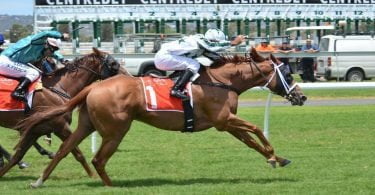The new video referee laws are the latest in a long line of Interpretations, connotations and embellishments designed to make rugby more ‘viewer friendly’ and free-flowing; which have a
The new video referee laws are the latest in a long line of Interpretations, connotations and embellishments designed to make rugby more ‘viewer friendly’ and free-flowing; which have actually turned the laws of rugby into a convoluted and often contradicting mess.
Video referee
After watching the Harlequins v Saracens, London derby recently, I was shocked to find the touch judge calling for a video referee decision for an offence that happened five minutes ago and fifty yards back. Yes Joe Marler’s tackle hit Wigglesworth in the head (who was in the process of a scrum half pass), but in no way was it dangerous, nor for that matter did affect play in any way shape or form. If we aren’t careful, the dark arts of rugby are going to be lost and we will be forced to watch over-paid pre-Madonna’s flounce around (if this is what you are into, I suggest you go watch football).
Crouch, touch, pause-engage!
Having refereed rugby up to juniors, I have long had to use the cadence, crouch…touch….pause….engage and this is something which is used for safety purposes. It shouldn’t be used as the referees do, to trick the front row into an early engage, all because the referee doesn’t have a clue about scrimmaging and wants to give a penalty. These long pauses followed by a quick shout of engage to catch people off guard are missing the mark.
As a referee once told me, ‘you should enter on the ‘E’ of engage’, I didn’t have the heart to tell him that there were two E’s in engage. This brings me nicely onto the new change in law ‘crouch…touch…set!’
Since when did set mean go? Having just watched a great deal of the London Olympics (a triumph I might add), I cannot say that I ever saw a runner begin his race on the word ‘set’, some RFU bigwigs really earned their crust there did they not?
I do have to say that I have heard much less whistle this season and that is refreshing as it has allowed for some fantastic free flowing rugby, I do however feel that referee’s need to move away from intricate finicky refereeing and learn about scrum time. A prop missing his bind because his opposite number is wearing a shirt three times too small for him is not a big deal, whereas a prop screwing or boring in on his opposite number is a bigger deal.
The ruck.
The recent change in the law to say that a tackler on his feet must release the ball and re-enter seems to me to be a great contradiction. If a player is on his feet then he has a right to that ball, and it is the player on the ground who should release IMMEDIATLY (a word often forgotten in the modern game). I used to thoroughly enjoy the likes of Serge Betsen getting over the top and forcing the turnover. Now it appears that the third fourth and fifth players into the ruck end up scrambling for the ball and the referee pings whoever he spots offending.
The ruck is easy to referee in that if the ball carrier has support, the advantage should go with the attacking team. If he is isolated, then the referee should air on the side of the defence. The only other thing to look out for is dangerous or foul play.
‘That is one scrum half’
What does ‘that is 1 scrum half’ mean? How many does the scrum half get and of what? If the maul stops moving forward, unless it starts to move again IMMEDIATLY, the ball should be used IMMEDIATLY. Too many times do I see a great defensive effort undone when the offensive team is allowed thirty seconds to rearrange the pack and force another drive.
Man up!
People need to realise that rugby players on the whole are big, hard-as-nails, men. Sometimes a player needs a slap to take away his psychological edge or to point out to the referee that he is doing something that he shouldn’t be. I think that there is a tendency to become a little card happy for quite innocuous offences, something that Sam Warburton will know about, following his red card in the world cup. Unless a player gets smashed on his head, it’s just a big hit and referee’s need to man up and realise this.
Some players could also do with manning up, diving to the floor because somebody stops you chasing your kick? Take a look at yourself. Connor O’shea has even been supplementing this acting with props, having sent on stage makeup to force blood replacements. This is the side of rugby I defiantly do not want to see.
Law changes I think have worked.
Yes I have just griped about the laws, but I do agree that running rugby is a delight to watch and the referee’s are allowing this style of rugby to be played. As an ex-forward though, I just don’t want to see the ancient art of ‘getting away with it’ lost. Rugby wouldn’t be rugby without cheating.
I have liked the way in which entry into the breakdown has been policed, with players being forced to come through ‘the gate’ and by staying on their feet it has really opened that game up.
I would even agree that the change a few seasons ago of carrying the ball back into the 22 stops you from being able to kick directly to touch; has made for a more expansive and exciting style of play.
Law changes that should be imposed.
I am fed up of watching drop goals! Yes it is a great skill to get into the right position, but my goodness is watching the likes of Jannie de Beer and similar ilk kick a ball from a position impossible to defend against boring. In a game of supreme skill, there aren’t even any sanctions for missing as the attacking team receives the ball back from a 22-meter restart.
If you want to encourage running rugby, the drop goals should be a tipping point in a game, not the deciding factor and like in rugby league should be worth one point.








